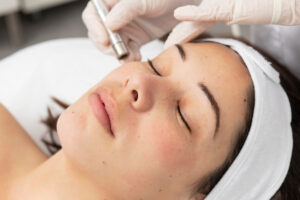
Thinking about trying Botox? Feeling overwhelmed with questions and don’t know where to start? We have you covered!

What can Botox treat?
Botox/Dysport/Jeuveau are primarily used for cosmetic purposes to reduce the appearance of wrinkles and fine lines on the face. However, Botox also has several medical applications. Below are some conditions that Botox is used treat:
Why Botox and not filler?
Botox acts on the muscles that create facial expressions, where dermal fillers are used for volume deficit. Dermal fillers are placed underneath the skin in areas that may need more definition due to volume loss. Botox lasts 3-4 months, where filler lasts 12-18 months. Filler results are immediate, where Botox results take up to 2 weeks to be fully effective. Although Botox and filler help treat lines/wrinkles on the face, they are used for different purposes and reasons. This is why a consult with an experienced medical professional is necessary to determine whether one or the other or both are necessary to reach your goals.
What can’t be treated?
While Botox is a versatile treatment, there are certain conditions and concerns that it cannot effectively treat. Here are a few examples:
How many units of Botox should I expect?
The average number of units used can vary depending on the treatment area, as well as the individualized treatment plan. The number of units required can vary depending on factors such as the severity of the wrinkles, individual muscle strength, and desired results. Below are general guidelines for commonly treated areas:
How painful is it?
The level of pain experienced during a Botox treatment can vary from person to person. Most individuals report minimal discomfort during the procedure. Here are a few factors that can influence the level of pain or discomfort:
Overall, many individuals describe the sensation of Botox injections as tolerable and relatively quick. Discomfort during the procedure is often temporary and subsides shortly after the injections are completed.
Will I have to get Botox again?
The frequency at which you will need to get Botox treatments again depends on various factors, including individual response to the treatment, the treated area, and the desired results.
In general, the effects of Botox injections are not permanent, and the muscle activity and wrinkle-reducing effects wear off over time. For most people, the effects of Botox typically lasts between three to four months. After this period, muscle movement gradually returns, and dynamic wrinkles will begin to reappear.
It’s worth noting that individual variations exist, and some people may experience shorter or longer durations of effectiveness. Factors such as metabolism, lifestyle, and the dose of Botox administered can influence how long the effects of Botox last.
What are the risks?
While Botox is considered a safe and widely used cosmetic treatment, there are potential risks and side effects associated with its use:
It’s important to choose a qualified and experienced medical professional for Botox injections to minimize the risks and ensure proper administration. They will assess your medical history, discuss potential risks, and provide appropriate post-treatment care instructions to mitigate the chances of complications.
Better beauty, improved wellness, and enhanced confidence await you at Ivy Aesthetics. We’re ready to help you find your most beautiful, radiant, and healthy self.

An Innovative Place for Beauty and Wellness